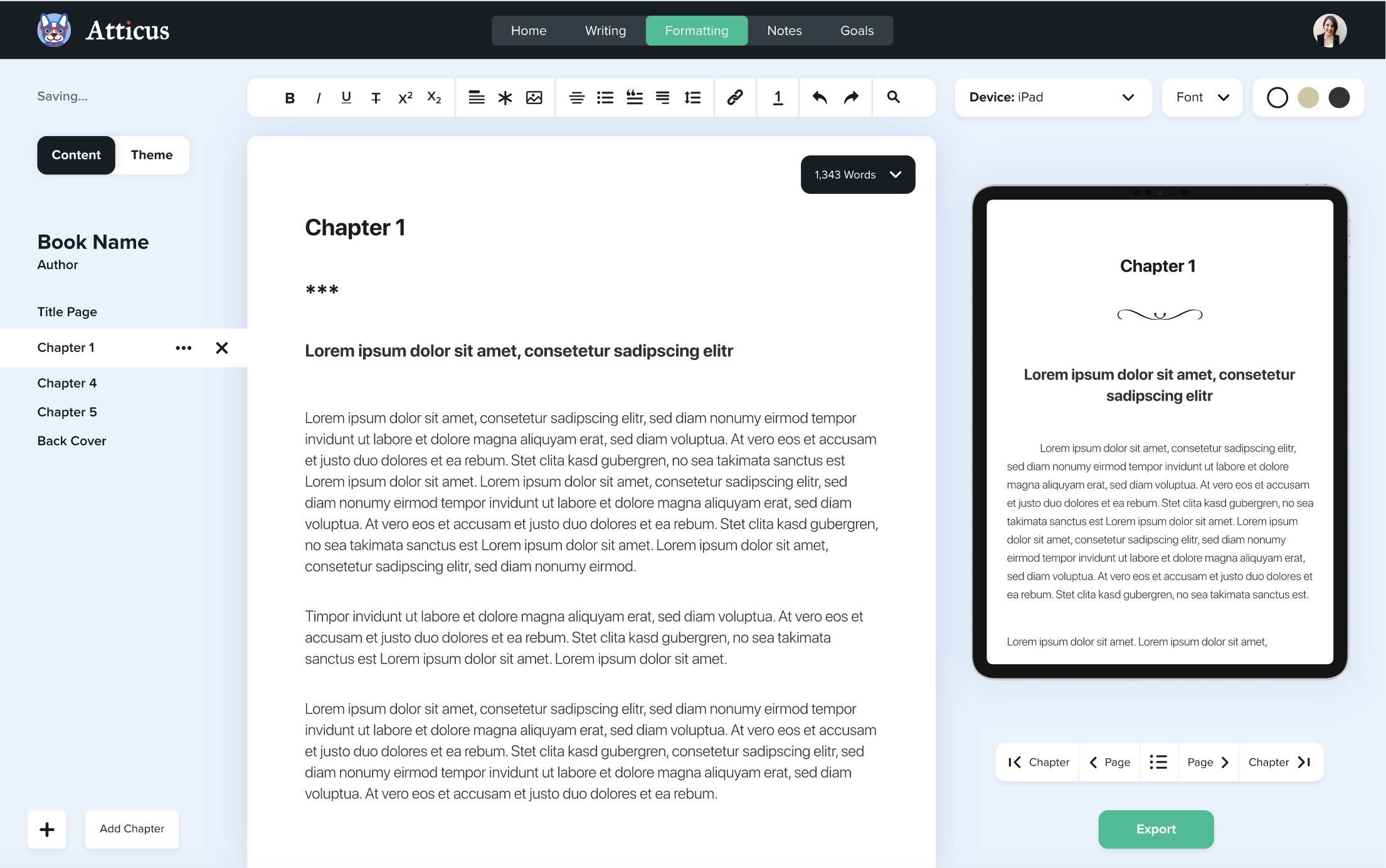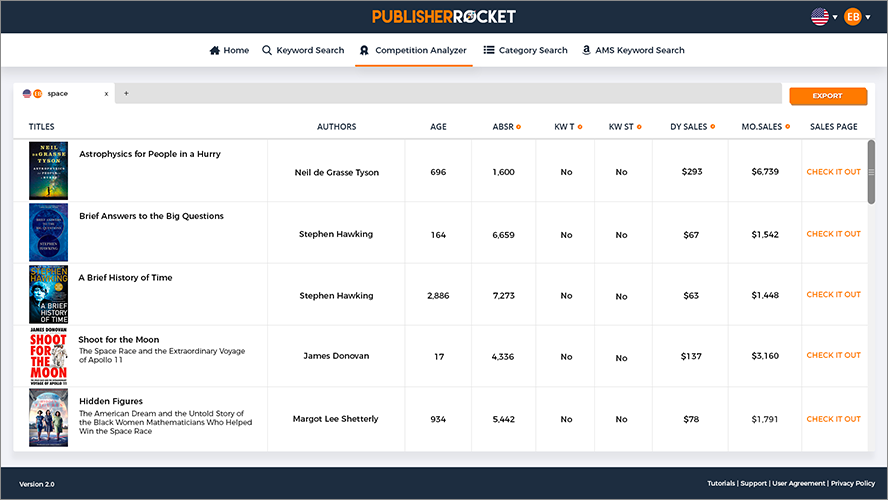I’ve been working at Kindlepreneur for some time, and I love to write nonfiction articles for authors. But my first love is writing fantasy.
Which is why I was excited when we decided to write this article.
Now, this article is just one in a series of articles about how to write in various genres, but I knew that I had to claim this one before anyone else could.
- Why you should write fantasy
- How to find your audience
- Where to even start
- How to build a plot
- How to develop fantasy characters
- How to world build
Table of contents
- Why Write Fantasy?
- Step 1: Find Your Audience First
- Step 2: Start With Setting
- Step 3: Craft a Compelling Fantasy Plot
- Step 4: Create Compelling Fantasy Characters
- Step 5: Build a Believable Fantasy World
- Step 6: Develop Effective Fantasy Writing Habits
- Step 7: Revise and Edit Your Fantasy Novel
- Other Fantasy Writing Tips
Let’s dive in.
Why Write Fantasy?
This is actually a question I’ve asked myself a number of times. Because, for a lot of people, fantasy can feel intimidating. It’s hard enough writing about the real world, much less create an entirely new one that needs to feel consistent.
But that said, here are a few reasons that I love to write fantasy, and why you might too:
- Amazing for the imagination: Fantasy frees you from the limitations of the real world. Here, dragons fly and wizards cast spells. Create entirely new worlds with their own rules.
- Wide appeal: Fantasy has a massive, dedicated following. From Tolkien fans to young adult fantasy aficionados, the market is substantial.
- Escapism: In stressful times, both writers and readers appreciate an escape. Fantasy offers a break from the mundane, the tragic, or the stressful.
- Dig into rich archetypes: Fantasy is ripe for using universal symbols and archetypes, like the hero's journey, to tap into shared human experiences.
- Franchise-building: Think Harry Potter or Game of Thrones. Fantasy series lend themselves well to adaptations—films, TV shows, video games, merchandise.
- Inspiration: Your tales of heroism and magical realms can serve as a powerful form of inspiration and empowerment.
- It’s just fun!: Last but not least, writing fantasy is fun. If you enjoy reading it, odds are you'll love writing it too.
So assuming you want to write fantasy (and I’m guessing you do if you’ve read this far), let’s dig into the steps to do so.
Step 1: Find Your Audience First
The first step with any genre, but especially in fantasy, is to figure out WHO you are writing for.
Don’t skip this part, it’s important.
Here are a few things you should do to get to know your audience as best you can:
- Understand the niche genre: Fantasy is a broad genre with many sub-genres—epic, urban, dark, to name a few. Zero in on the niche that interests you most. It will give you a sense of direction.
- Read those books: Don't just stick to the classics. Dive into your specific sub-genre. By reading widely, you'll get an idea of what already exists and what readers are looking for.
- Engage in online communities: Search for Facebook groups related to your niche. Become an active member. Listen to what people are saying, their likes and dislikes, and common themes that arise. This will give you invaluable insights into your future readership.
- Read well-known fantasy authors: While niche reading is crucial, don't ignore the titans of the genre. Understand what makes authors like J.K. Rowling or George R.R. Martin successful. Examine their storytelling techniques and narrative structures.
- Understand well-known tropes: Familiarize yourself with recurring themes and motifs in fantasy—like the “Chosen One” or the “Reluctant Hero.” But remember, tropes aren't bad; it's how you make them fresh that counts.
If you haven’t read a lot of books or understand the tropes that readers expect, you can’t expect them to like what you write.
Yes, it’s possible to bend the rules now and then, but you can’t bend them unless you know them thoroughly, enough to really understand where and when it’s appropriate to change things up.
Step 2: Start With Setting
Once you've identified your audience, the next step is choosing a setting. This forms the foundation for plot, characters and everything that follows. Here are a few tips:
- Pick a Portal: Do characters from our world travel to a fantasy realm through a portal? This instantly connects readers since we experience the magical world through the POV of our surrogate character. Portals can include mysterious doorways, teleporting wardrobes, whirlpools, and more. The portal trope has been a fantasy staple since Alice fell through the looking glass.
- Construct a Whole New World: Or you can build a completely fictional world like Middle Earth or Westeros—the ultimate act of fantasy creation. This immersive option requires extensive worldbuilding since you're constructing a new reality from scratch. But total creative freedom makes it highly rewarding.
- Blend Real and Fantasy: Urban and historical fantasy blend real and magical elements. The tensions between the mundane and mystical make for resonant fiction. For example, magicians living secretly among us regular folk in urban fantasy. Or retelling actual historical events with folkloric twists like Naomi Novik's Temeraire dragon rider books.
- Pick a Familiar Starting Spot: Begin in a familiar setting like a medieval village, mysterious wilderness or magical academy before unfurling more fantastical environments later on. This eases readers into your world. Luke lived on a moisture farm before heading to wild planets in Star Wars.
- Make It Personal: Most importantly, choose a fantasy setting that resonates with YOU. Tap into your own passions and knowledge like Renaissance festivals, antique maps, roleplaying games, etc.
Formatting Has Never Been Easier
Write and format professional books with ease. Never before has creating formatted books been easier.
Click here to see it in actionStep 3: Craft a Compelling Fantasy Plot
Once you've established the setting, you need an equally compelling plot. Here are tips for fantasy plots that cast a spell over readers:
- External Goal/Quest: Fantasy protagonists often embark on an epic quest like rescuing a kingdom, recovering a magical artifact, overthrowing a dark lord or finding their true destiny. Make sure the external stakes are high enough to justify a novel-length adventure. Include formidable obstacles and nail-biting climaxes.
- Internal Conflict: Layer your fantasy quest with internal conflict. For example, a heroine must overcome self-doubt and trauma from her past to fulfill her destiny. These inner struggles make characters relatable. External and internal arcs should interweave seamlessly.
- Magical or Supernatural Elements: Incorporate fantasy/magical aspects organically into the plot. How do they influence or complicate the story events? For example, magic gifts may help the hero…but also make them reckless and arrogant. The curse that must be lifted has unexpected side effects.
- Subplots and Supporting Arcs: Surround your protagonist with a supporting cast whose subplots, motivations and backstories interconnect with the main arc.
- Twists and Reversals: Layer in exciting twists, complications, setbacks, discoveries, betrayals and revelations throughout your fantasy plot. The path to victory should never run smooth. Shake things up to maintain suspense.
- Blend Genres: While pure fantasy is engaging, blending in other genres like mystery, horror, romance etc can create uniquely flavored tales. For example, Naomi Novik's dragon rider books add military fiction elements that complement the fantasy foundation.
- Outline Thoroughly: Fantasy's complexity demands meticulous outlining. Map out chapters, scenes, plot points, character arcs and more.
Step 4: Create Compelling Fantasy Characters
Now let's discuss how to people your world with multidimensional characters readers will adore.
- Hero's Journey Archetype: Many fans love stories that echo the universal “hero's journey” template. Their structure and emotional beats resonate deeply. Key phases include the call to adventure, meeting the mentor, crossing threshold, tests/ordeals, seizing the sword, resurrection, and return home with elixir.
- Flawed Heroes: The most relatable fantasy protagonists have flaws, quirks or moral ambiguity rather than being generically heroic. Give them hot tempers, arrogance, addictions, anxieties, prejudices or violent impulses that force them to grow. Readers crave imperfect heroes (but not too imperfect).
- Scene-Stealing Sidekicks: A great fantasy sidekick serves many functions: comic relief, voice of reason, protector, confidante, and more. They in turn reveal hidden aspects of the protagonist. Loyal sidekicks like Samwise Gamgee are reader surrogates along for the adventure. Give them unique bonds with the protagonist that tug heartstrings.
- Nuanced Villains: While clearly evil, the best fantasy antagonists have complexity instead of being cookie-cutter villains. They have empathy-inducing motivations, principles, soft spots, and doubts that add nuance. Visceral moral struggles make compelling villains.
- Supporting Cast: Populate your world with a diverse supporting cast representing different fantasy races, personalities, motivations and functions in the story. Vary relationships between characters—allies, rivals, loved ones etc. Interweave supporting arcs that complement the hero's journey.
- Fantastic Races: From graceful elves to stout dwarves to cunning goblins, readers love stories starring classic fantasy races. Or invent your own original variations! Either way, construct different biology, abilities, cultures, histories, temperaments and societal roles for each race. But avoid obvious stereotypes.
- Magical Companions: Fantasy heroes often have devoted magical companions like helpful fairies, wise dragons, loyal griffins or quick-witted unicorns. These companions act as guides, transport, comic relief and fellow underdogs.
- Character Arcs: Make sure each major character undergoes an emotional arc and transformation by story's end, not just the protagonist.
Step 5: Build a Believable Fantasy World
Perhaps the most challenging yet rewarding aspect of writing fantasy is constructing an intricate secondary world. Where do you even start inventing a whole reality? Here's my advice:
- Magic System: A defining aspect of most fantasy worlds is a system of magic. Determine its rules, costs, limitations and how it's harnessed. Is magic common or rare? Does using it drain life force or sanity? Do mages invoke divine powers or manipulate natural energies?
- Races and Creatures: Populate your world with original or traditional fantasy races like elves, dwarves etc. Plus invent mythical beasts and monsters. Consider their appearances, powers, temperaments, societies, histories and how they fit into the world. Give each a distinct flair.
- Moral Alignment: What overarching cosmic principles guide your world? Is there objective good vs evil like Middle Earth? Or moral relativism like in Game of Thrones where every faction believes they're justified.
- History and Mythology: Invent ancient histories, wars, dynasties, prophecies and mythological accounts that provide backstory. Timelines span eons.
- Politics and Factions: Dream up an array of factions, houses, orders, guilds, empires and more locked in an intricate web of rivalries and uneasy alliances. Detail their philosophies, customs, clothing, values, economic interests and subcultures.
- Languages: Invent unique languages for each race and realm with influences from earth languages like Elvish borrowing from Celtic tongues.
- Maps and Geography: Maps allow readers to trace and anticipate the adventure. Note major landmarks like wizard towers, monster lairs, ruins and kingdoms. How do terrain, climate and natural resources impact cultures that arise? Harsh desert clans will differ from seafaring islanders.
- Religion and Spirituality: Is your world polytheistic or monotheistic? Do different races worship distinct pantheons? Outline core tenets, rituals, clerical ranks and holy sites. Belief systems reflect worldviews and values. And religious power structures deeply shape societies.
- Food, Sports, Pastimes and Arts: On a lighter note, have fun detailing cultural trivia like beloved epic poems, national cuisine, celebrities, fashion trends, industries etc. This adds delightful local flavor. Maybe dwarves enjoy underground mushroom stew and beetle racing! Go wild with creativity.
- Start Small: While Tolkien could spend thousands of pages on worldbuilding, modern readers often prefer more restrained approaches. Start with one village or city as a homebase, then expand the world's scope along with the story. Less is often more.
For more on worldbuilding, see our comprehensive article on the subject.
Step 6: Develop Effective Fantasy Writing Habits
Now for the actual writing! Though inspiration is crucial, dedication and self-discipline are what transform ideas into finished manuscripts. Here are habits that help:
- Set a Daily Word Count Goal: Establish a daily word count target tailored to your schedule. 500-1000 words per day is reasonable for busy folks. Hitting regular incremental targets adds up over time better than sporadic long sessions. Track progress to stay motivated.
- Write at the Same Time Daily: Pick a set time and stick to it as much as possible to build a habitual routine, especially mornings. Writing during your peak energy hours when you're fresh and distraction-free sets you up for success.
- Minimize Internet/Social Media: It's obvious but worth stating: turn off the internet to avoid endless distraction sinkholes! Disconnect to stay on target.
- Write Offline: To avoid the lure of internet rabbit holes, one method is to write your first draft offline in a basic word processor.
- Try Writing Sprints: Sprints are short timed writing bursts like 25 minutes where you write without stopping. Take short breaks between sprints to recharge. The time pressure turbocharges your word count.
- Write By Hand: Unplug and go old school by writing parts of your draft longhand with pen and paper. Our brains engage differently.
- Outline The Next Chapter: Outlining your next chapter ahead of time gives you a roadmap to follow for the writing session. Stick to the major story beats and scenes. But leave wiggle room for spontaneous inspiration once writing.
- Timeline and Tracker: Use a timeline and character tracker to organize complex story threads. This helps avoid inconsistencies and holes. Update these documents as your story evolves. Keeping detailed records saves headaches later.
- Utilize Accountability: Find an accountability partner like your critique group or a trusted writer friend to check in on progress. Knowing someone is expecting regular updates keeps you on track. Better still, write together at coffee shops for camaraderie.
Step 7: Revise and Edit Your Fantasy Novel
You did it! First draft complete. But lots of work remains to polish your diamond-in-the-rough into a dazzling gem ready to publish. Here are tips for the editing stage:
- Developmental editing: Critique and strengthen the high-level components like plot, pacing, characters, worldbuilding and voice. Fix plot holes, flesh out weak points, cut unnecessary sections, and adjust pacing.
- Line editing: Take passages line-by-line to refine repetitive wording, clichés, weak verbs, and awkward phrasing. Inject more vivid details and concise language.
- Copy editing: Scrutinize the manuscript for grammar, spelling, punctuation, consistency, accuracy, and formatting issues. Verify facts, dates, names are correct.
- Beta readers: Get feedback from trusted readers on elements that need improvement or clarification. Incorporate their diverse perspectives.
- Proofreading: Perform final checks for any typos, formatting errors, spacing issues, etc. before publication. Double check all names and facts.
Other Fantasy Writing Tips
Here are some final miscellaneous tips that can help you level up as a fantasy writer:
- Prologues: Prologues are slightly controversial, as some authors don’t like having them, but other authors insist they should be used. Generally speaking, I recommend using them if you want to set up the conflict and tone of the book, and if your chapter 1 doesn’t do this on its own (common when starting from the “Ordinary World”.)
- High or Low Fantasy?: High fantasy worlds have pervasive magic. Low fantasy settings contain only subtle magical influences. Figure out which mode fits your story best. Low magic often sustains more tension and sense of wonder when the supernatural is rare.
- Hard vs. Soft Magic Systems: Hard systems have strictly defined rules and limits. Soft is more arbitrary and mysterious. Hard fits stories focused on mastering abilities and strategy. Soft suits tales emphasizing mysterious wonder.
- Symbolism Resonance: Layering in recurring motifs and symbols that reinforce core themes adds depth. Eternal struggle between light/dark, decaying kingdom symbolizing moral decline, etc. Enhance resonance.
- Study Real History and Mythology: History and myths offer endless inspiration. Adapt elements like ancient pantheons, lost civilizations and military conquests. Research also helps build realistic dynamics between fictional races and cultures. Truth provides verisimilitude.
- Steal From The Best: Every great artist stands on the shoulders of those before. Don't copy outright, but study and remix ideas from fantasies you admire. Masterful classics teach invaluable lessons in worldbuilding and storytelling. Let their triumphs inspire your own.
And those are my best tips for writing transportive, sublime fantasy fiction! It's an ambitious undertaking, but immensely fulfilling. I hope these strategies help you turn the fantastical stories kindling in your soul into fully-realized novels.
Your imagination is the only limit.










